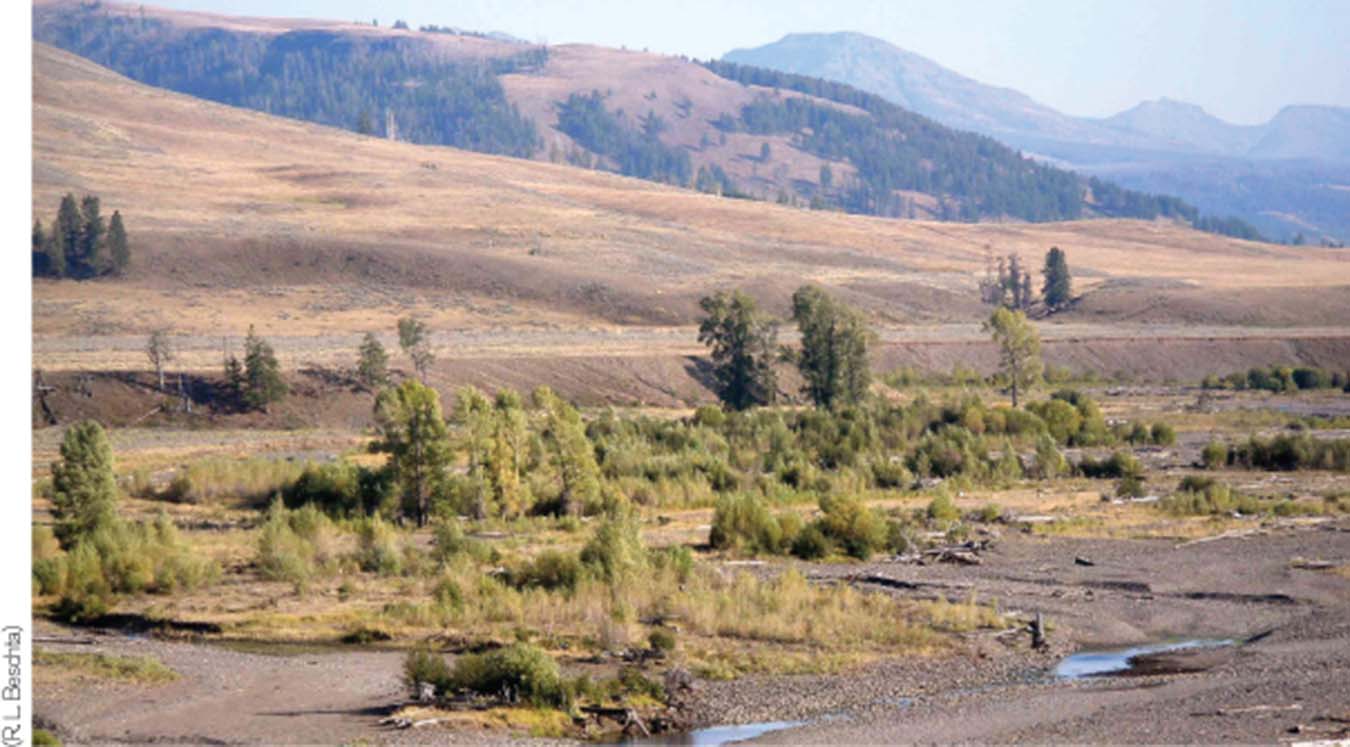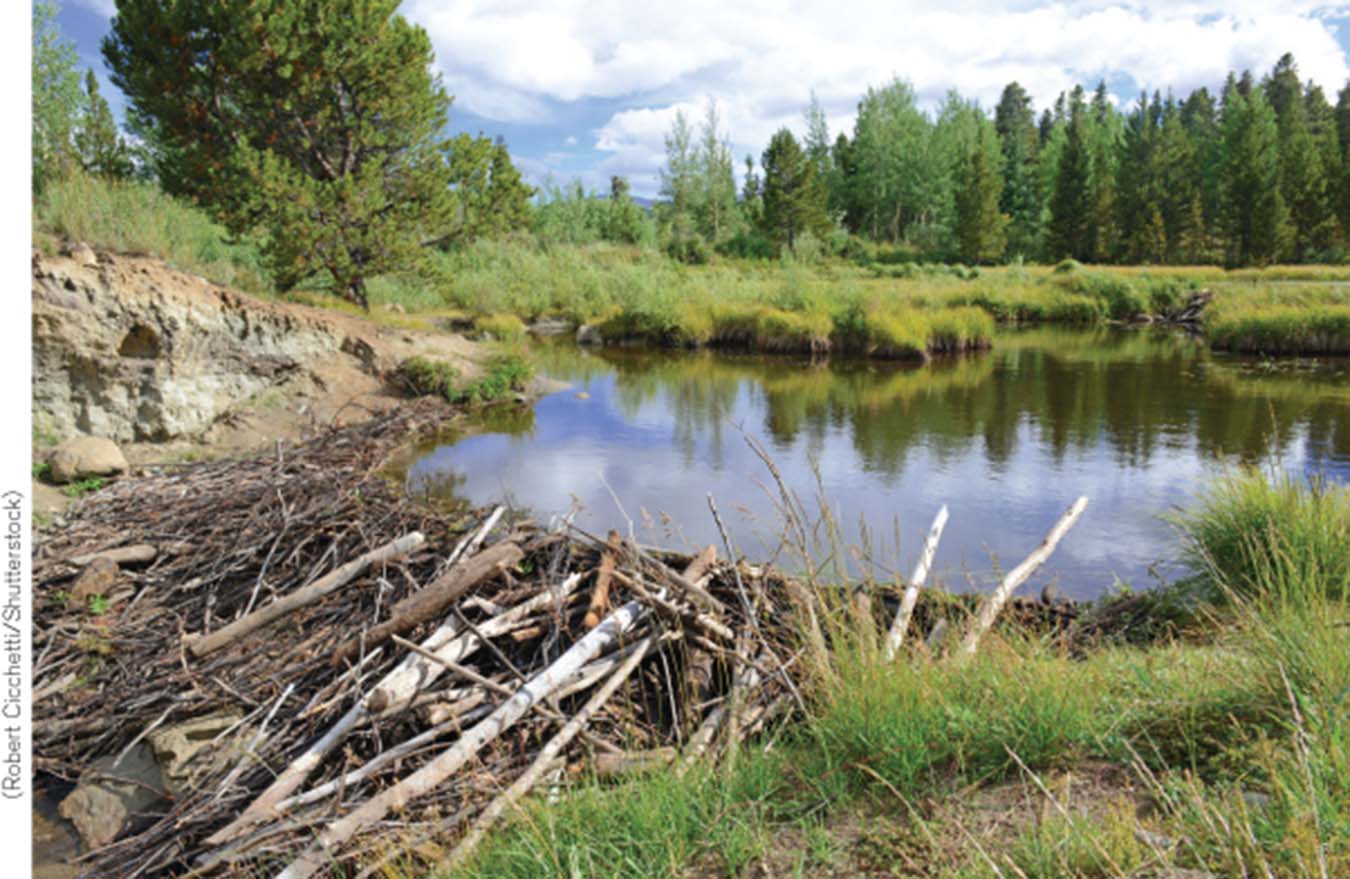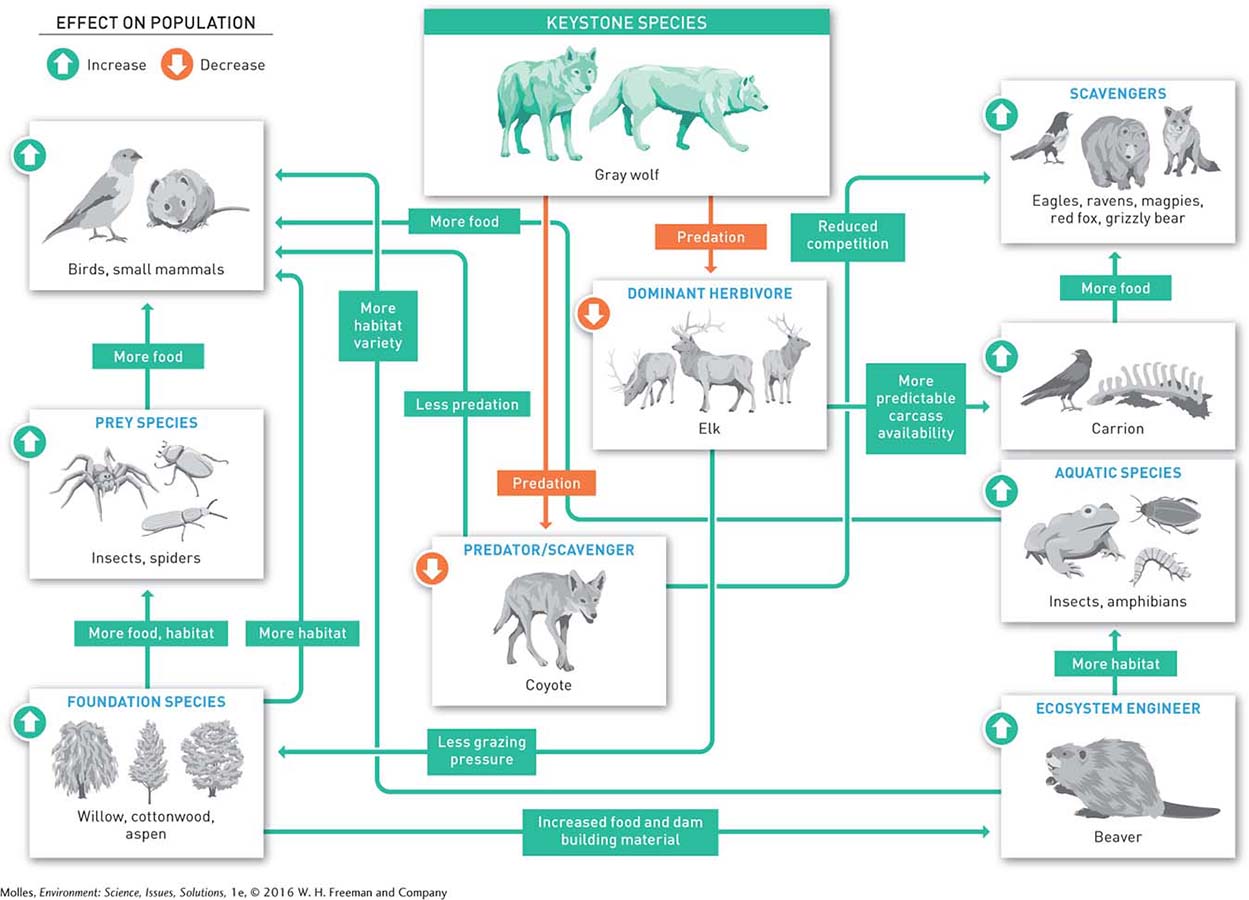4.3 Some species influence biodiversity much more than others
103
The species in an ecosystem can be thought of loosely as a sports team, where each species has a different role to play. While the loss of any player might hurt the team’s prospects, the loss of certain ones, such as the quarterback in football, would be absolutely devastating. In nature, it’s also the case that some species appear to be more vital to the integrity of communities and ecosystems than others.
Keystone Species and Ecosystem Engineers
keystone species A species with substantial influence on community structure, despite its low biomass or numbers relative to other species; the influence of keystone species is often exerted through feeding activities.
Species that exert significant effects on biodiversity despite low abundance within the community are called keystone species. Losing one of these species is like the collapse of a stone archway following the removal of its keystone. Keystone species are usually top-



Why is starvation no longer a major source of mortality among elk wintering in Yellowstone National Park?
104
ecosystem engineer
A species, like the beaver, that influences ecosystem structure and processes by altering the physical environment.
These effects trickled down through the ecosystem. As willows increased in size and abundance, there was an increase in the feeding and breeding habitat available to birds. Beaver populations grew, too, and physically altered the landscape as they became more abundant (Figure 4.11). Species, like the beaver, that manipulate the physical environment and influence ecosystem structure and processes are called ecosystem engineers. By preying on elk throughout the year, wolves also left behind carrion that other species, including grizzly bears, coyotes, foxes, ravens, and eagles, could feast on.

Foundation Species
foundation species
A species that strongly influences community structure by creating environments suitable for other species by virtue of its large size or biomass.
Foundation species create a physical framework for the community with their own bodies. Think, for example, of a forest, where the trees form a canopy and where shrubs and herbaceous vegetation on the forest floor create a habitat for other species. In the ocean, corals or kelp create a complex structural framework for fish and other animals to live in and feed in (Figure 4.12).

105
Willows and cottonwoods, since they appear to have been released from control by elk grazing, may resume the status of foundation species in the Yellowstone National Park ecosystem. In addition to providing food for beavers, willows are a nesting habitat for a diversity of birds, including the endangered Western willow flycatcher. They provide shelter and food to a great diversity of insects, as well as cover for small mammals. By shading the ground, willows change the temperature and moisture conditions experienced by soil organisms, including worms, insects, and fungi. Again, wolves, by chasing elk out of streamside and riverside areas, seem to be releasing willows from herbivore control, further underscoring the keystone role of wolves (Figure 4.13). These far-

How might the views of an elk hunter versus a trapper of beavers for the fur trade differ in regard to wolf restoration in the Northern Rocky Mountains?

Indicator, Umbrella, and Flagship Species
indicator species A species that provides information about the state of the ecosystem in which it lives.
umbrella species A species whose protection provides protection for the entire ecosystem on which that species depends.
flagship species A species that attracts and sustains human interest in protecting ecosystems.
There are many other species that can play important practical roles as we work to conserve ecosystems and landscapes. Viable populations of some species can demonstrate the health of the ecosystems on which they depend. Consequently, monitoring these indicator species, such as the California gnatcatcher, which is associated with coastal sage scrub (see Chapter 3, page 77), can provide information about the state of the ecosystem in which they live. Management designed to sustain populations of indicator species, as well as others such as the grizzly bears of Yellowstone or the spirit bear of the temperate rain forests of western Canada (see Figure 3.21, page 78), is another entry into ecosystem conservation. Indicator species can also act as umbrella species, since protecting them provides protection for the entire ecosystem on which they depend. Yet other so-
106
Think About It
Can an organism be a keystone species and an ecosystem engineer? How about a keystone species and a foundation species?
Why do conservation biologists take threats to keystone species, ecosystem engineers, and foundation species very seriously?
How might too much attention to known keystone and foundation species harm conservation efforts?